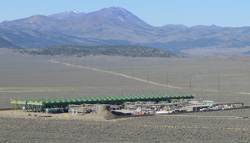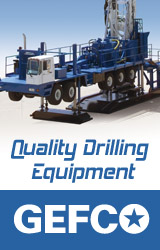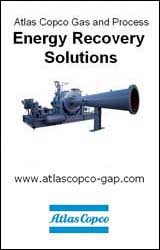Remote Monitoring System for Geothermal Power Plants

Through the use of remote monitoring system, users can identify and solve problems before they impact production. Such systems continuously collect and analyze machine health, providing immediate notification of minor changes to major ones. Resources can then be optimized and maintenance activities proactively planned, rather than responding to them from a reactive standpoint. In this sense, geothermal power plant production has come a long way.
Burdensome beginnings
Developed geothermal resources are, often times, located in remote or hard-to-access places—think 45-miles down a washboard-style dirt road in Nevada, or buried deep in the foliage on the side of a volcano in Hawaii. And, by nature, low-temperature resources typically host smaller ORC geothermal power plants, making local operations and maintenance staff an economic burden.
These plants combine many disparate and complex process systems, along with rotating machines; among them geothermal fluid pumping facilities, gathering and separation systems, electrical protection, and the ORC units themselves, which require continual monitoring and control. A remote monitoring system uses the power of the Internet to provide access to data, perform predictive maintenance or trouble-shooting diagnostics, and conduct tests from anywhere with the simple click of a few buttons. But, it wasn’t always this concise.
In the first years of automated programmable control, special communications systems were developed to acquire and transmit data from local control systems to central, remote control rooms. These Supervisory Control and Data Acquisition systems were usually vendor specific—applicable only to specific equipment, very expensive, and limited in range. True remote monitoring (such as overseas) was exceptionally difficult.
All of this changed when Ethernet networks and the Internet was developed. Although the first control systems had limited remote monitoring support, and involved mostly a thin replication of the local graphic displays. Data was transmitted through a phone line modem, making rather slow transfers of small amounts of data possible. To connect, a remote user needed dedicated software installed in the computer. Due to slow data lines that were prone to frequent disconnections, remote sessions were typically used for monitoring and, when possible, for support.
Technology of today
Improved data transfer and better connections were possible when Ethernet networks and the Internet became available through fast broadband. With faster data transfer and more reliable connections, remote users were: able to get a more comprehensive look at a plant; sustain longer sessions without interruption; and even had the option of not only giving verbal support, but also fixing the problem themselves.
These days, remote connection is straightforward and seamless through the Internet using either a standard web browser, or off-the-shelf remote access software, which can be accessed easily and securely by computers connected to the network either physically or through a virtual private network connection. Using fast and reliable Internet connections, remote users get almost the same feel of operability as local operators do, creating valuable offsite monitoring and analysis, and remote support and programming.
Observable benefits
The turbine and accompanying rotating equipment in a geothermal plant doesn’t operate at a steady state. It can be affected by many factors, such as flow, pressure and temperature changes, and power generation requirements. Some phenomena only occur under certain process parameters that could even be the cause of a machine’s problem.
A remote monitoring system allows geothermal power plant operators and engineers the ability to remotely monitor production equipment for telltale signs of machine enigmas, such as deteriorating bearings, misalignment, unbalance, bent shaft, structural problems, and flow-related issues. Vibration data is acquired by accelerometers and proximity probes mounted on various locations on turbines, generators, and other rotating equipment. The system records current equipment data from remote locations, provides various statistical points, and alerts personnel to process problems before they become serious—ultimately, avoiding system shutdown for maintenance purposes.
In addition to preventative features, performance data is available through individual web ports. Equipment can be visually monitored anywhere, anytime. With the introduction of remote monitoring, geothermal developers and operators will incur vast savings in operations and maintenance, as well as increased system productivity with the reduction of reactive maintenance shutdown periods.
Ormat Technologies, Inc. is the only vertically integrated company primarily engaged in the geothermal and recovered energy power business. The company designs, develops, owns, and operates geothermal and recovered energy-based power plants around the world.
Ormat Technologies, Inc.
www.ormat.com
Author: Heidi Bethel, Ran Reshef & Tomas Fever
Volume: July/August 2012











